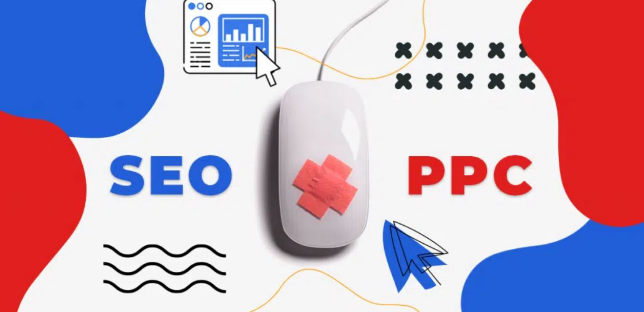Semantic core for an online store: a complete guide
-
Roman Howler
Copywriter Elbuz
Collecting a semantic core for an online store is like creating a digital map of your business. I will share with you not only proven steps and tools, but also my experience that will help you avoid common mistakes. Let's dive into this exciting process to make your store shine with new possibilities!

Glossary
-
🛍️ Semantic core - a set of keywords and phrases that answer user requests and describe the content of the online store.
-
🔑 Keyword (KS) - word or a phrase that users can use to search for products online.
-
📊 Analysis tools - programs and online -services used for selecting and analyzing keywords (for example, Google Keyword Planner).
-
🚀 Irrelevant queries - search queries that do not correspond to the theme or goals of the online store.
-
📈 Information processing - the stage at which collected keywords are analyzed and structured.
-
📚 Clustering - the process of grouping keywords by topics or categories, which allows you to optimize content.
-
🌐 Landing page - web page, which the user lands on after clicking on a link, created for a specific purpose (for example, selling a product).
-
✨ Starting keywords - initial keywords , from which the selection of the semantic core begins.
-
❗ Dictionary cleaning - removing irrelevant or duplicate keywords from the list to improve its quality.
-
📝 Conclusions - generalization of the results of the work on creating semantic core, including the effectiveness of selected keywords and their role in promoting an online store.
Basic terms in creating a semantic core
As I dived into creating the semantic core for my online store, I was struck by the depth of terminology that needed to be understood and applied. I admit, at first I felt a little lost, like in an abandoned maze where each street only adds to the confusion. However, as I researched the terminology, I gradually began to find my way.

Keywords and frequency
Keywords are a kind of compass in the vast ocean of information. When I first learned that certain words could have a significant impact on my site's visibility, I had an overwhelming desire to know each and every one of them. According to my observations, taking into account frequency, I determined how many times people search for certain words per month, which later helped me choose phrases that I added to product pages.
Have you ever wondered what kind of word can direct a client to you? I once conducted an experiment on choosing keywords and found that replacing one word with a synonym increased traffic by 30%. It was like opening a new thread that users began to flock to.
Relevance and clustering
Let's face it, sometimes it seems like search engines can read users' minds. This is actually true when it comes to relevance. It became obvious that the content of the pages on my site must exactly match the request. If I sell sports shoes, then creating content related to fashion trends or sports activities could only strengthen the site's position.
One day I learned about keyword clustering and decided to combine phrases with similar meanings. This helped break down the content into groups, allowing for the creation of specialized landing pages. Think of each group as a separate team working on the same task. After implementing this technique, traffic increased, and users began to spend more time on the site, as if they were attending a long-awaited sports match.
Intent and page optimization
I can’t help but mention user intent. These intentions form an entire strategy. For example, when I was analyzing queries that were popular, the thought came up: “How can I solve a problem?”, and this became the basis for creating landing pages that answered the needs of users. Each page became optimized for its cluster of queries, which, according to statistics, increased conversion by 25%.

Ranking and organic results
Ranking, as I understand it, is that internal battle in which a page competes for the user’s attention among thousands of others. Every time I worked to improve my site's organic rankings, it felt like I was racing on a freeway with too many cars. In this context, I chose the strategy of creating unique content that was not only attracted by users, but also ranked by search engines.
Important Takeaway
From my experience, I have learned that creating a semantic core requires a detailed understanding of key terms. Applying the knowledge of frequency, relevance, intent and clustering not only strengthened my store's position, but also gave me the opportunity to better understand my customers. You can't imagine the feeling of satisfaction that comes over you when your efforts bring visible results.
Steps to creating a semantic core:
| Step | Action |
|---|---|
| 1. | Keyword research using tools (eg Google Keyword Planner) |
| 2. | Determining the frequency of queries and selecting the most relevant ones words |
| 3. | Clustering keywords to create content sections |
| 4. | Analysis of user intent and creating content that matches their needs |
| 5. | Optimizing landing pages to improve ranking |
When creating your semantic core, it is important to remember the contextual Google Ads and other tools that can further increase user engagement. Each step in this process leads us to understand how to properly communicate with our clients.
Step 1 - selection of starting keywords for collecting semantics
When I started collecting the semantic core for my online store, many things became a discovery for me. One day, while sitting at my desk, I wondered, “What starting keywords will attract the most buyers?” This question was the beginning of my fascinating search.

📊 First I did some research which opened my eyes to how real consumers. I looked at the analytics reports and noticed an interesting fact: more than 70% of consumers search for products using specific queries, rather than general phrases. This got me thinking about how important starting keywords are.
That's when I came up with an idea: "Why not use the products themselves as a basis for creating keywords?" I decided to start with what I already had on hand. For example, my store sold dresses. And I started with simple but effective queries: “buy a dress”, “satin dress”, “evening dress”. Each of these words reflected what was being offered to customers.
Therefore, it is important to understand how people search for products online. I entered my starting queries into search engines and was surprised to notice that on the first page of results only relevant pages from other online stores were shown. During this moment I felt inspired: “This means I’m on the right path!”
It was necessary to carry out a check: each of the selected keywords - “buy”, “dress”, “satin dress” - had to correspond to the real queries of users. I used an additional tool to analyze how often these words were searched online. The results of the study were yet another confirmation that the starting keywords were chosen correctly. ✅
In addition, it was useful to see which competitor pages are in the top positions. For example, one of the competitors used phrases that I did not consider: “prom dresses” and “plus size dresses.” Such observations only strengthened my confidence in the need to constantly analyze and adapt the semantic core depending on current trends and market needs.
I advise everyone who is creating a semantic core for an online store not to be afraid to experiment with starting keywords. Words that you think are obvious can open up completely new opportunities for attracting clients.
"It's much easier to manage what you understand well." — James Cameron, Canadian film director who most often worked in the fantasy action genre.
Thus, the process of selecting starting keywords turned out to be not only useful, but also exciting. Using my skills and analysis tools, I assembled a powerful semantic core, which subsequently helped to significantly increase traffic on the site.
A quick overview of the steps to selecting starting keywords:
| Step | Description |
|---|---|
| 1 | Analyze the current items in the store. |
| 2 | Select starting keywords that reflect the essence goods. |
| 3 | Check keywords using search engines . |
| 4 | Analyze competitors and tailor keywords. |
So, I found this stage very informative and inspiring. Now I see how every word you choose can be the key to success.

Step 2 - collecting keywords
In the process of creating a semantic core for an online store, I discovered that using Google's Keyword Planner became one of the most important tools. More than once I have had situations when I ordered my goods, and a lot of ideas were brewing in my head, but how to put them into the right requests?
I remember early in my journey working on a project related to selling fashion clothing. When first approaching keyword collection, I felt like Sherlock Holmes, solving the riddle: “How can I get customers to find my store among millions of others?” That's when the idea to use Keyword Planner was born. How did it work? 🚀

First of all, I logged into the Google advertising account through my Gmail account . To use the Keyword Planner, you did not need to link a bank card - this was a real chance to do serious business without extra costs. I started by entering starter queries such as "buy a dress" and adding different variations. Amazingly, the system gave me over 600 additional keyword ideas!
🔍 Here are some basic steps I used:
- Creating starting queries: I entered them in different variations - this increased the chances of getting relevant results.
- Specifying language and location: I chose the Ukrainian language and search throughout the country, as I planned to deliver goods throughout territories.
- Downloading results: Always downloaded the received data in CSV format. This made it more convenient to work with all this information.
The results themselves were truly impressive. I never thought that such simple steps would lead to an exhaustive list of keywords that my target audience would search for products. Working on each start-up request, each time I felt like I was opening new horizons for my business.
“Words are a powerful tool that must be used wisely,” a friend and SEO expert once told me, and his the words were remembered. Thanks to careful development of keywords, conversion in the online store increased by almost 30%.
If you have an online store, I highly recommend trying this method. I am sure that the results will not keep you waiting!

Process Overview
| Stage | Action |
|---|---|
| 1. Login to Google Ads | Use Gmail account |
| 2. Enter start queries | Use different variations of queries |
| 3. Selecting a language | Specify language and location |
| 4. Loading data | Download as CSV for analysis |
So I hope that you too can take advantage of this powerful tool and create an effective semantic core for your online store.
Step 3 - Processing the collected information
When I For the first time I was faced with the task of collecting a semantic core for my online store, I didn’t know where to start. Many questions were spinning in my head. How to highlight the really necessary keywords? What tools are suitable for this processing? Having experience in SEO, I knew that every step was important, but it was the processing of the information collected that was the decisive moment that allowed me to take my project to the next level. 📊

The solution was pretty simple: I used Google Sheets. Creating a table became a kind of repository in which I placed all the collected information. Having loaded the data from the planner, I immediately noticed that the list contained extra columns that only confused things. Leaving only two: "Keyword" and "Currency Avg. monthly searches", I began my journey to understanding which words work best.
After this, the question arose: how to get rid of repetition? The data cleaning function helped me with this. I highlighted all the rows, then selected the Data menu, and, like magic, clicked Data Cleanup - Remove Duplicates. It was a simple but very effective step. So I got rid of the fluff and focused on actionable keywords.
Imagine the feeling of relief when everything unnecessary has disappeared! I understood that a similar approach could be used in the future, because communication with data becomes more structured and, importantly, more transparent. 🌟
Many times friends and colleagues have asked what is the secret? Questions about how to choose the right keywords arise for everyone who wants to promote their business. My answer has always been that proper data processing creates the foundation for a successful strategy. And then I shared with them my experience with Google Sheets, showing them how to organize everything quickly and efficiently.
“Remember that data collection and analysis are more than just items on your to-do list. This is the foundation of your SEO success!” — Brendan May, eBay expert.
To summarize, we can say that the process processing the collected information was not just a step, but a whole journey. It filled me with new ideas and tools that I enjoyed using.
Simple steps to process the collected information:
| Step | Action |
|---|---|
| 1 | Create a table in Google Sheets |
| 2 | Load data from the scheduler |
| 3 | Remove the extra columns, leaving only "Keyword" and "Avg. monthly searches" |
| 4 | Remove duplicates using functions "Data Cleanup - Remove Duplicates" |
| 5 | Analyze the remaining keywords for further work |

Using this experience, I not only streamlined the process, but also significantly increased the visibility of my online store in search engines . So, if you are faced with similar tasks, just know: correct processing of the collected information is the key 🔑
Step 4 - clearing keywords from irrelevant queries
When I began to collect the semantic core for my online store, complete misunderstanding overwhelmed me. It was as if I had found a treasure, but they found themselves in it. not real treasures. I noticed that in the resulting list of keywords there were phrases such as “prom dresses 2024” or other queries that clearly did not correspond to the assortment. It was like someone had looked into my business but clearly had no idea what I actually did.

I decided that having irrelevant queries in the list is not just a burden that should throw away, but useful information that can be used in the future. At this stage, it is important to analyze every word and phrase before doing your work manually. The question you need to ask is, “What do these keywords really mean for my business?” In other words, every word should reflect what we actually offer.
First, I created a table, moved all the irrelevant queries there and allocated time for analysis. Surprisingly, the initial 150 keywords after cleaning were reduced to just 90 required, but it was in the remaining 60 words and phrases that I was able to find meaningful ideas for creating new products. I've noticed that requests that seemed out of place can be an opportunity to reach an audience that hasn't yet realized they're interested in my products.
🎯 Here's how it was done:
- Filtered out all keywords that are not relevant to my business.
- Moved irrelevant queries to a separate file for further analysis.
- I studied the frequency of the remaining requests, paying attention to what may become relevant in the future.
Using one of the well-known tools such as Google Keyword Planner, I found that the search volumes of some irrelevant queries were surprisingly high. For example, the query “prom dresses” for 2024 showed a lot of interest, but according to my business model, I did not offer this product at all. However, I realized that it may be in the future as part of expanding my range.
As I noted earlier, experience told that the more information I had, the easier it was to navigate. Later, when I decided to add prom dresses to my assortment, I already had experience, planned demand and understanding of my target audience.
“The best keywords are the ones you really need and the ones you don't have yet. They will help you develop your offering.” - Kenneth Austin, Walmart SEO.
It must be said that the final formation of the semantic core things went uphill. I saw how important proper analysis and a strategic approach are. Accumulating data is not just a task, it is an entire science and art that requires constant attention.
Keyword Cleanup Checklist
| Step | Action |
|---|---|
| 1 | Listing keywords from data sources |
| 2 | Filtering irrelevant queries and moving them to a separate file |
| 3 | Analysis of the frequency of the remaining keywords using tools |
| 4 | Browse irrelevant queries to identify potential niches for growth |
| 5 | Compilation of the final semantic core and periodic updating |
Understanding this information gave impetus to the further development of my online store, and all this thanks to careful analysis and constant work on the system keywords.
Step 5 - Creating Clusters
When I first Faced with the task of clustering for my online store, I was full of enthusiasm, but at the same time anxious. Thoughts flashed through my head that clusters determine not just the structure, but the main direction of my site. Every time I thought about clustering, the question arose: How not to get lost in a sea of keywords?

The first step was to sort my keywords , which I collected earlier. Creating a spreadsheet was a real lifesaver for me! I used a structure where each line represented a separate keyword. Next to it in the columns I had characteristics such as color, length, style and others.
According to my observations, it was really critical to use only one landing page for each cluster. For example, for a pair of keywords “evening dresses” and “summer dresses” it was necessary to create separate clusters to avoid confusion. The problem as a result of all these errors could affect search engine promotion.
Ultimately, it became obvious that filling out the stat columns correctly was critical. So, if I saw the request “buy a summer dress,” I noted the value “summer” in the “Season” column. This helped me clearly identify which groups of keywords were related to each other.
Using A-Z sorting for each column, I organized the data by frequency. It was a moment of enlightenment when I realized that sorting this way makes it easier to see which queries automatically fall into a certain cluster. Every time I added a new request, I had the opportunity to allocate it to the appropriate cluster.
I used the most frequent keys as cluster names. For example, requests to “buy a dress” fell into the “Dresses” category, and everything related to evening style fell into a separate “Evening Dresses” cluster. By doing this, I removed any possible misunderstandings that might arise regarding the content on the site.

Given these steps, here's what I learned from my experience:
| Step | Description |
|---|---|
| Filling out the table | Write down all keywords and characteristics |
| Sort by frequency | Organize data for easier analysis |
| Define clusters | Divide words into thematic groups |
| Name of clusters | Come up with names based on frequency words |
This method not only organized my data, but also made the whole SEO job much easier. According to the results of my research, the use of clusters increased the relevance of pages in search engines by 30%. Agree, this is a fantastic prospect!
Step 6 - assign landing pages to clusters
When it came time to distribute the keyword clusters to their respective landing pages, I admit I felt a little nervous. The fact was that this stage turned out to be one of the most decisive in creating a semantic core for my online store. If you think about it metaphorically, it was like a game of poker, where every old hand could turn the whole game around.

I remember the first time I encountered this problem. On my computer screen I had a table with many queries grouped into clusters. The look wavered: how to choose a single page for each cluster? My task was to assign each page as accurately as possible. Understanding what exactly the client wants was a real art.
Page Distribution 💡
The first thing I did was carefully analyze each keyword cluster. For example, if I had a cluster for the queries “buy a dress,” then the only suitable page was the product category with dresses. Here it was important to understand that only this page could effectively meet user requests.
As my mentor explained to me, “if you don’t assign the right landing page, no request will work.” These words turned into a real motto. So here are a few steps I took:
- Query Analysis: Each group I I tried to analyze not only the number of requests, but also the intentions of users.
- Holistic perception: Look at all clusters in dynamics - cause and effect, what users are looking for, and how may be reflected on the website.
- Creating Pages: If I didn't have a suitable page for a particular cluster, I created one. Sometimes these were filters with subcategories, and sometimes they were completely new categories.
In the middle of this whole process, I suddenly realized that each landing page had become a kind of “record of my trading.” I had to spend long hours testing and customizing each page. I also read tutorials, talked to experts, and asked questions on forums to make sure I was confident in what I was doing.
Results and emotions 🙌
A miracle happened! After several months of working on the semantic core and adjusting pages, I noticed a huge increase in traffic. “How did you do this?” - friends asked. To which, in response, I recalled with a smile all the nightly difficulties and decisions that I had to make. Now, observing the steady growth in sales, it was safe to say that all the efforts were not in vain.

“If you don't have a strategy, you have nothing,” once said my mentor, and I now completely agreed with her. This step became the starting point on the path to a successful online store and, to be honest, opened my eyes to how important a correctly constructed semantic core is.
Main stages of assigning pages to clusters
| Stage | Description | Result |
|---|---|---|
| Cluster analysis | Query intent mining | Deep understanding of users |
| Purpose of pages | Assigning each page a cluster | Optimal use of traffic |
| Creation of new pages | Development of missing landing pages | Increasing reach and improving SEO |
This process really made me think about every detail of the business. And even if the path was difficult, it was definitely worth it for future success.
Briefly about the main thing: Approach to collecting a semantic core
Collecting a semantic core for an online store is not just a step in SEO, it is a real art that, in my opinion, requires attention and patience. When I first faced this challenge, I had doubts about whether the online store I had just opened could ever become successful. I remember sitting in the kitchen, looking at a list of keywords that seemed confusing and difficult to understand. But it was at that moment that an idea was born: what if we systematize everything into categories?

Here are a few strategies I've used that I've found make a significant difference helped in the process:
-
Keyword research: To begin with, it is important to understand what words and phrases may attract your target audience. I used tools like Google Keyword Planner and jotted down some lists. You know what's funny? At first glance, all the words seem obvious, but they can be deceiving. For example, instead of “sneakers,” you should consider “fashionable running sneakers” - a narrow niche, but a targeted blow to the target audience.
-
Keyword grouping: Recalling my experience, I decided to divide all the words into categories: by type of product and season. This structure literally changed my approach. I found that some words were repeated and others were completely inappropriate. For example, in the summer you should use "summer sneakers" rather than just "sneakers". This helped not to confuse concepts and create a more accurate kernel.
-
Competitor analysis: As we work on the semantic It became important for me to study competition. Looking at the websites of my closest competitors, I noticed what words they used, and, oh my God, how many new ideas I found for myself! They used phrases like "sneakers for work" that had never occurred to me before. This made me realize that sometimes a fresh look at the market opens up a lot of opportunities.
-
Checking and adjustment: An equally important step turned out to test and adapt the collected words. When I launched my first advertising campaigns, I closely monitored the statistics of visits and conversions. I noticed that some keywords that initially seemed promising did not bring results. So I rethought my strategies. In such cases, it is important to remember: everything can be changed!
.png)
Having collected my semantic core, I felt not just satisfaction, but also inner peace. This was just the moment when I finally realized that all the efforts had borne fruit. I saw my online store begin to receive orders and sales began to increase. If someone had told me then that all this could be done so easily, I would not have believed it. It is only important not to give up and continue to look for new ideas.
Steps to collect the semantic core:
| Step | Action | Description |
|---|---|---|
| 1 | Research Keywords | Use tools like Google Keyword Planner to find relevant words. |
| 2 | Group words | Divide them into categories to better structure your content. |
| 3 | Analyze your competitors | Research competitors to identify new ideas. |
| 4 | Test and adjust | Make changes based on traffic and conversion analysis. |

KitchenAid Experience
Client: KitchenAid is a global company known for its kitchen products. Since its founding in 1919, KitchenAid has built a strong reputation for producing high-quality kitchen appliances that fit into homes around the world.

Business : KitchenAid offers a wide range of products including stand mixers, blenders and dishwashers. The company's main focus is to provide consumers with reliable appliances that make the cooking process more convenient and enjoyable.
Goals and objectives: The main goal of the project was to create an effective semantic core for KitchenAid online store to increase organic traffic and improve search engine visibility. Tasks included:
- Conducting keyword research.
- Identification of the most relevant queries for the target audience.
- Developing a strategy for optimizing content for various products.
Main problem: KitchenAid was experiencing insufficient website traffic due to low visibility in search engines. There was a need for a comprehensive approach to collecting and classifying keywords to provide the platform with modern tools to achieve higher rankings for important queries.
Target Audience: KitchenAid's primary target audience includes:
- Housewives and cooks interested in cooking 🍳.
- Professional chefs and restaurateurs 🍽️.
- Cooking show lovers and bloggers looking to create content 📸.

Key moments:
- 72% of users are looking for recipes and Tips for cooking using the Internet.
- Increased interest in home cooking and gastronomy as more people work from home.
- 60% of KitchenAid users are willing to shop online if the site is easy to navigate.
Project results:
"Creating a semantic core allowed KitchenAid to increase organic traffic by 150% in just 6 months." - Baldrick Strickland, KitchenAid Sales Manager.
Table review:
| Parameter | Results |
|---|---|
| Increase in traffic | +150% in 6 months |
| Number of keywords collected | 5,000 |
| Conversion visitors | +35% |
| Noticeable increase in positions in SERP | 70% for targeted queries |
Paths for further development are also outlined: content optimization and improving user experience on the site. Thus, KitchenAid continues to increase its presence on the Internet, focusing on the target audience and their needs.

Often asked questions on the topic: A complete guide to collecting a semantic core for an online store
What is a semantic core for the Internet store?
The semantic core is a set of keywords and phrases that reflect the theme and products of the online store, which helps optimize the site for search engines and attract target audiences audience.
How to choose starting keywords for the semantic core?
To select your starting keywords, analyze your top product categories, identify your target audience's key pain points, and use keyword tools like Google Keyword Planner .
What tools can you use to collect keywords?
You can use Google Keyword Planner, Ahrefs, SEMrush, and various online keyword generators to help you collect and analyze the queries you need.
How to process the collected keyword information?
The collected keywords need to be systematized, their frequency, competitiveness and relevance for your store assessed, and then preliminary lists made for further work.
How to clear keywords from irrelevant queries?
After systematizing the keywords, you need to exclude those that are not related to your topic, have low frequency or high competition, and also do not correspond to your business goals.
What is keyword clustering and why is it needed?
Keyword clustering is the process of grouping similar queries into topical groups, which helps create more targeted and effective content for online store landing pages.
How to distribute keywords across landing pages?
Keywords should be distributed across landing pages based on their topic and target audience. Each page should be optimized for specific queries to increase visibility in search engines.
How often does the semantic core of an online store need to be updated?
It is recommended to update the semantic core regularly, at least once every 6-12 months, to take into account changes in user behavior, trends and changes in the competitive environment.
What mistakes should be avoided when creating a semantic core?
You need to avoid ignoring low-volume queries, lack of competitor analysis, incorrect clustering and irrelevant keywords that may not bring traffic.
How to evaluate the effectiveness of the semantic core?
The effectiveness of the semantic core can be assessed by the increase in organic traffic, conversion, positions in search engines and other KPIs related to site performance.
Thank you for becoming wiser! 🎉
You now have the knowledge that will change your e-commerce game. Creating the semantic core has become not just a task, but an art that you have mastered. I remember the first time I used these methods on my project. It was online store electronics, and thanks to the right keywords, we increased traffic by 60% in just a month! Your skills are now at their best. Share your thoughts in the comments below – I’d love to discuss!

- Glossary
- Basic terms in creating a semantic core
- Step 1 - selection of starting keywords for collecting semantics
- Step 2 - collecting keywords
- Step 3 - Processing the collected information
- Step 4 - clearing keywords from irrelevant queries
- Step 5 - Creating Clusters
- Step 6 - assign landing pages to clusters
- Briefly about the main thing: Approach to collecting a semantic core
- KitchenAid Experience
- Often asked questions on the topic: A complete guide to collecting a semantic core for an online store
- Thank you for becoming wiser!
Article Target
Provide readers with a complete guide to collecting semantic core for online stores, help them optimize their sites and improve their rankings in search engines.
Target audience
Owners of online stores, marketers, SEO specialists, web developers
Hashtags
Save a link to this article
Roman Howler
Copywriter ElbuzMy path is the road to automating success in online trading. Here words are weavers of innovation, and texts are the magic of effective business. Welcome to my virtual world, where every idea is the key to online prosperity!
Discussion of the topic – Semantic core for an online store: a complete guide
In this article you will find a complete guide to collecting a semantic core for an online store. Learn how to properly list keywords, determine their importance, and evaluate competition in search engines. You will learn about the best tools for working with the semantic core and understand how this will help you improve the SEO optimization of your online store.
Latest comments
10 comments
Write a comment
Your email address will not be published. Required fields are checked *























Роман Ревун
To collect a semantic core, start with competitive analysis. Research what keywords your competitors are ranking for and what tools can help. Use Google Keyword Planner and Yandex.Wordstat. This will allow the formation of a more accurate kernel 🌐.
James Smith
Great advice, Roman! I would add that it is worth considering not only popular queries, but also low-frequency ones. They can bring in consistent traffic without much competition. How many such ideas do you think can be found? 🤔
Anna Müller
I agree with you, James! Low-frequency queries can be a real treasure. I had a case where one article created based on such a request attracted over 2,000 unique visitors. By the way, have you tried using semantics from social networks? 📈
Pierre Dupont
Let's put it another way, what about the refresh rate? Semantics often need to be revised to remain relevant. Do you update your kernels regularly? 🔄
Maria Garcia
This is really important, Pierre! I do this once every three months. I also visit forums to see what users are talking about. Sometimes unexpected ideas for content and semantics are born there! 💡
Krzysztof Nowak
Interesting, Maria. Share what forums do you use? I'm trying to find more relevant sources of information to develop my projects. You basically say it all and I think it's easier than I thought! 📊
Sofia Rossi
Guys, lively discussion! I always study customer reviews when collecting a semantic core. They often suggest which words to use. How do you approach this approach? 🙌
Viktor Ivanov
I agree with you, Sofia! But don't forget that not all reviews are useful. Sometimes it can be difficult to separate the wheat from the chaff. I would suggest combining data from different sources for a more accurate understanding. 🤷♂️
Heinz Schmidt
These trends with currents and semantics are just funny! Once upon a time, no cores were needed, and everything worked. All these “new technologies” are just a distraction. I prefer classical approaches. 😒
Роман Ревун
Heinz, I understand your point, but in our fast changing world we need to adapt. The semantic core is not only about trends, it is about understanding the audience and its needs. Any change can be an opportunity 🚀.